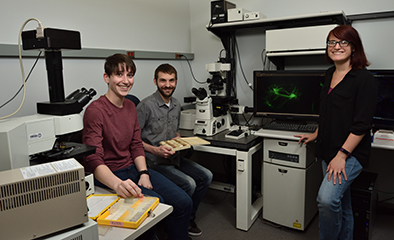CBMP Faculty
Jianhua Xing, PhD

Associate Professor, Department of Physics and Astronomy
Department: Computational and Systems Biology
Email: xing1@pitt.edu
PubMed: Link
Dept / Lab Webpage: https://www.csb.pitt.edu/Faculty/xing/
CBMP groups: Genomics, Proteomics and Metabolomics, Cell Communication, Signaling and Ion Channel Biology, Cellular Injury, Wound Healing, Aging and Tissue Regeneration
Research Interests
In year 2012 Dr Shinya Yamanaka received the Nobel Prize in Physiology or Medicine for his groundbreaking work of reprogramming differentiated cells into stem cells that can be further induced to transform into other cell types. This is an example of cell phenotypic transition (CPT). CPT is ubiquitous in biology. Mammalian cells that share the same genome exist in notably distinct phenotypes, characterized by different morphology, gene expression patterns, and epigenetic chromatin statuses. The human cell atlas project (https://www.humancellatlas.org) aims to characterize all human cell types. With all this increasing knowledge, understanding how a CPT progress is regulated and how it proceeds will provide guidance for interfering and manipulating the transition process, either suppressing undesirable transitions such as in cancer metastasis and fibrosis, or directing transitions to the desired direction such as specific differentiation routes of stem cells in regenerative medicine. Consequently, quantitative study on CPTs emerges as one of the most exciting frontiers for basic science and biomedical research.
Two grand technical challenges, however, impede further development of the field. Fixed cell-based approaches can provide snapshots of high-dimensional expression profiles but have fundamental limits on revealing temporal information, and fluorescence-based live cell imaging approaches provide temporal information but are technically challenging for multiplex long- term imaging. The Xing lab currently focuses on developing and applying integrated experimental and computational approaches to tackle these challenges, and study CPT dynamics, with the ultimate goal of regulating such transitions. Members of the lab come from various background including physics, computer science, systems and molecular cell biology. See the Xing lab website for more details.
